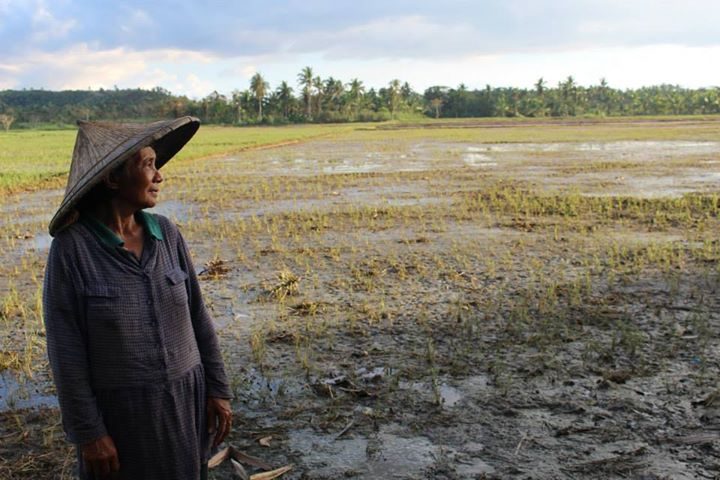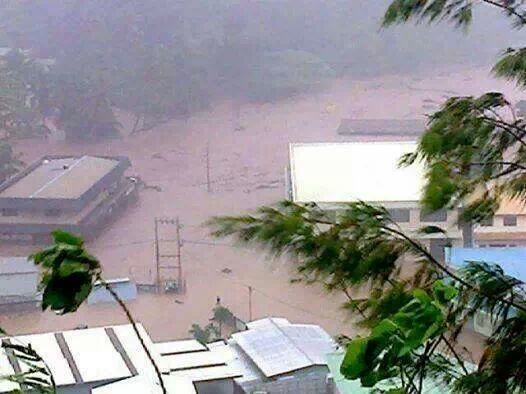
By Angus Hohenboken, Media Coordinator — International Programs and Emergencies, Oxfam Australia.
Estrella is only one among 4,139 rice farmers who have borne the devastation of three typhoons that have torn across the island of Samar in the past thirteen months. This is the third time they’ve lost their crops, and have been left with nothing to harvest.
Floods caused by heavy rains, overflowing rivers and storm surges, have washed away crops, and caused salt water to seep into the soil. Having lived their lives in one of the most disaster prone regions in the country, every storm pushes them deeper into the mire of poverty.
All that 62-year-old Estrella Deliktor can do is look at her flooded rice field and pray. “We are struggling with poverty, but there’s nothing we can do,” she said.
The Department of Agriculture estimates total agricultural losses from Typhoon Hagupit (locally known as Typhoon Ruby) to have reached P1.9 billion. It has damaged 55,850 hectares of farmlands, incurring production losses of 56,090 metric tons in Bicol, Western Visayas, and Eastern Visayas. Oxfam’s rapid assessment teams have validated these, having found rice, corn and banana crops in many regions to be completely decimated.
When the latest storm began whipping their rice crops in Barangay Nacube, in the Gandara municipality of Western Samar, Nanay (Mother) Estrella and her family decided to stay home.
“We didn’t go to the evacuation center because they were cramped,” she said. “The typhoon was so strong, it had strong winds, and it partially damaged our home. Inside our house, we had knee-high floods.”
Nanay Estrella has five daughters aged 32 — 40. With her husband no longer around, Estrella grows the crops herself, together with hired help. She farms 1.5 hectares of land and pays eight sacks of rice per harvest season as rent. In 13 months, three strong typhoons have already flooded her rice paddy.
Before the typhoons started flooding her farm, she could harvest as much as 50 sacks of rice, but the inundation of storms lowered the yields to just 30 to 40 sacks per harvest.
Estrella said that they were only able to harvest 40 sacks last October and has just started planting for the next season, but Typhoon Hagupit inundated and destroyed the rice farm.
“It is difficult to get food, we lost all our food,” she said. “We eat root crops if we have money, if not we have to ask for food from relatives. But there is always someone who will help.”
The village chief, Barangay Captain Renato Moral, said he evacuated his home when the water reached three feet up the walls. A blockage in the river meant Hagupit’s deluge had nowhere to go.
“Around 80 to 90% of rice farmers in his area planted their crops before Ruby,” Renato said.
That meant they could not take advantage of early warnings to harvest before the storm arrived.
“We are farming three hectares of land and we will be lucky to get three sacks of rice. We normally get 90 sacks per hectare,” he said. “There are 171 families in this Barangay. Many families will have to borrow money to buy seeds.”
Around 70% of families in regions affected by Hagupit are dependent on agriculture and fisheries for their livelihoods. Oxfam is coordinating with the Philippines Government in its response to Typhoon Hagupit and is ready to distribute cash payments to assist farmers with immediate needs including food, farm tools and planting materials such as rice seeds, if required.
Our International crisis fund ensures that we’re able to respond quickly and efficiently when an emergency occurs around the world.
